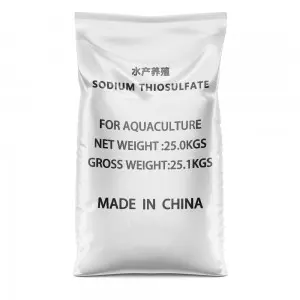



Understanding the Toxicity Effects of Polyacrylamide on Environmental and Human Health
The Toxicity of Polyacrylamide Understanding the Risks
Polyacrylamide, a synthetic polymer used widely across various industries, has garnered attention not only for its beneficial applications but also for its potential toxicity. From wastewater treatment to hydraulic fracturing, polyacrylamide plays a crucial role in numerous processes. However, the environmental and health implications of its use have led to increasing scrutiny.
What is Polyacrylamide?
Polyacrylamide is formed by the polymerization of acrylamide monomers. This white powder is soluble in water, giving it great utility in applications such as soil conditioning, paper manufacturing, and the extraction of oil and gas. Moreover, it is often used as a flocculant in the treatment of drinking water and wastewater to facilitate the removal of impurities.
Health Risks Associated with Acrylamide
One of the main concerns regarding polyacrylamide is its toxicity, particularly due to the presence of acrylamide, which is known to be a neurotoxin. Acrylamide is classified by the International Agency for Research on Cancer (IARC) as a probable human carcinogen. Chronic exposure to this compound, even at low levels, has been associated with various health risks, particularly neurological disorders.
Studies have shown that animals exposed to high levels of acrylamide exhibit symptoms of neurotoxicity, such as motor weakness and sensory nerve damage. Although the levels of acrylamide encountered by humans in the industrial use of polyacrylamide may be significantly lower, the cumulative effects of long-term exposure are still a point of concern for researchers and health professionals alike.
Environmental Impact
polyacrylamide toxicity

Besides its toxicological effects on human health, polyacrylamide also raises environmental concerns. When used in agricultural applications, it can migrate into soil and water systems, potentially affecting aquatic life. The degradation of polyacrylamide in the environment can produce potentially harmful by-products, increasing ecological risks.
Regulation and Safety Guidelines
Given the potential hazards associated with acrylamide, regulatory agencies have established guidelines to mitigate risks. In the United States, the Environmental Protection Agency (EPA) has set permissible exposure limits for acrylamide and continues to evaluate its health risks. Similarly, the Occupational Safety and Health Administration (OSHA) regulates acrylamide levels in workplaces to protect workers from exposure.
Employers and industries using polyacrylamide are encouraged to implement safety measures, including personal protective equipment (PPE), engineering controls, and regular monitoring of air and water quality. Improved handling and disposal methods are also essential to minimize the risks associated with polyacrylamide.
Alternatives to Polyacrylamide
In light of the potential risks, researchers are exploring alternative materials that offer similar benefits without the associated toxicity. Biodegradable polymers and natural flocculants derived from plants are some of the alternatives being investigated. These substitutes could provide effective solutions for various applications while minimizing the impact on human health and the environment.
Conclusion
While polyacrylamide remains a valuable tool in numerous industrial applications, the toxicity of acrylamide presents significant concerns that warrant careful consideration. Understanding the balance between the benefits provided by polyacrylamide and the potential health and environmental risks is crucial. Increased awareness and research into safer alternatives can help mitigate these risks, ensuring that the use of polyacrylamide is conducted responsibly. As industries continue to depend on this versatile polymer, it is imperative to prioritize safety and sustainability for the health of both individuals and the planet.
-
Why Sodium Persulfate Is Everywhere NowNewsJul.07,2025
-
Why Polyacrylamide Is in High DemandNewsJul.07,2025
-
Understanding Paint Chemicals and Their ApplicationsNewsJul.07,2025
-
Smart Use Of Mining ChemicalsNewsJul.07,2025
-
Practical Uses of Potassium MonopersulfateNewsJul.07,2025
-
Agrochemicals In Real FarmingNewsJul.07,2025
-
Sodium Chlorite Hot UsesNewsJul.01,2025










